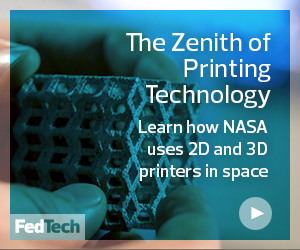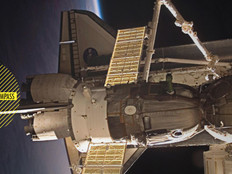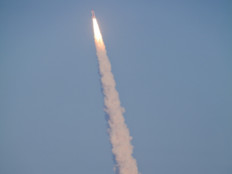NASA Takes Microgravity into Account for Printing in Space
There are several features NASA needed to make sure a microgravity printer could carry out that a regular office printer might not, Cox says. One was to ensure that the printer could print in any orientation, so if the printer was stuck to a wall or the ceiling in the space station, it would still print.
Additionally, Cox says, “you want to make sure that the paper is all contained. You can imagine if you just had an open tray of paper, it might float out in microgravity.” The same holds true for printer ink. “We want to make sure that the ink will be completely sealed, you're not going to have any random leakage, especially if you're trying to print on the ceiling,” she says.
“Space is hard on everything,” Cox notes. “Microgravity, for whatever reason, is a lot harder on our printers than it normally would be on the ground.”
Additionally, safety is always a paramount concern for NASA, so the materials the printer is made out of had to be safe for space. “You really want to make sure that you don't have really flammable material all over the printer, because we do the best we can to control flammability in the space station,” Cox says.
What Do Astronauts Print?
If astronauts find themselves in an emergency scenario, NASA wants to make sure they have printed, hard-copy procedures ready to go “just in case the technology decides to fail on you at the very last minute,” Cox says.
Printed procedures are also useful even for nonemergency situations. When the astronauts engage in something very complicated, like a spacewalk, NASA has “very delicate procedures that go with it,” according to Cox.
“It’s a very, very complicated, choreographed space dance that they're doing out there,” Cox says. “We have to make sure that they know all of the intricacies, and one of the things that they do is to print out what the procedure is.”
Giving astronauts something tactile they can hold onto, write notes on and highlight can give astronauts “a little bit more sense of control” and preparation before complicated procedures are undertaken.
Printing also helps improve the quality of life aboard the space station, since astronauts can print out pictures of their families or drawings children might make.
Since the ISS launched into orbit 20 years ago, NASA has “definitely seen a decrease in the amount that our astronauts are printing,” Cox says, which is “mostly due to the fact we have tablets.”
NASA mission controllers can send astronauts procedures that they can pull up on tablets, which can be easier than flipping through a printed procedure book. Nonetheless, those books are floating up there, and they are still being printed.
For more on how NASA prints in space, visit our Feds in the Field video series page.











